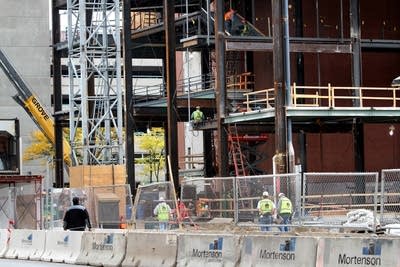Why not spend Minnesota Orchestra's $140M endowment?

Both major Twin Cites orchestras have now locked out their musicians in tandem contract disputes over major pay cuts the orchestras are seeking.
One of the central issues in the Minnesota Orchestra dispute is the use of endowment funds to pay for ongoing operations. Musicians question management's stance that the endowments cannot sustain the multimillion-dollar withdrawals of recent years.
An endowment is generally a portfolio of investments that is supposed to grow while producing a stream of income that helps fund the mission of the beneficiary. An endowment is not a rainy day fund to be spent when times get tough, said John Walda, CEO of the National Association of College and University Business Officers.
"What they really are is a collection of gifts from individuals who have expressed the intent to have the corpus of their money there in perpetuity, generating returns that support a scholarship, research of whatever it happens to be," he said. "It's not as though you can make a decision, unilaterally, to start spending down that value because that was not the intent of the gift."
Create a More Connected Minnesota
MPR News is your trusted resource for the news you need. With your support, MPR News brings accessible, courageous journalism and authentic conversation to everyone - free of paywalls and barriers. Your gift makes a difference.
The Minnesota Orchestra has about $140 million in four seperate endowment funds.
But the endowment is nearly $100 million short of projections made five years ago, said Jon Campbell, chairman of the Minnesota Orchestral Association's board.
"The endowment today is not as large as we had expected it to be," Campbell said.

There are two reasons for that, he said. The stock market plunged during the great recession. Even though stocks have recovered, the endowment hasn't grown.
"The investment performance is basically flat," he said. "It went down. It's come back up. But there's a compounding problem. That is, we have been taking excessive draws that are not sustainable out of that endowment for a number of years."
The orchestra board has the leeway to tap one of the four endowment funds as needed to pay for operations, Campbell said.
"The general rule of thumb for endowments is the draw rate should not exceed 5 percent," Campbell said. Last year, it was more than three-times what would be appropriate."
Annual withdrawals from that fund have jumped from about $7 million a few years ago to about $12 million in the past two years. Campbell said that portfolio, which accounts for about half the total endowment, is on track to be gone by 2018.
For the orchestra's past five budget years that endowment fund posted an annualized negative return of 0.1 percent. Meanwhile, a similarly sized fund that the orchestra cannot tap as aggressively posted a positive return of 0.1 percent.
The orchestra is not alone in seeing flat endowment growth.

Endowment funds for colleges, universities, museums and other cultural institutions and nonprofits are not performing any better.
"Even though 2009 and 2010 were very strong years, most organizations are still not back to where they were," said William Jarvis, managing director of the Commonfund Institute, which manages over $24 billion for more than 1,500 nonprofits, pension funds and institutional investors. "Most organizations are really only back to about 85, 86 percent of where they were, after spending for their mission."
But the Minnesota Orchestra has also been fundraising and is close to reaching its goal of $110 million in donations. Much of the money will be used for building projects and can't be diverted to other purposes. But about $30 million will go into the endowment.
"It will help alleviate some of the further changes we would have had to make to musicians' salaries," said Michael Henson, CEO of the Minnesota Orchestra.
The orchestra's unionized musicians don't accept management's argument that the endowment cannot and should not fund salaries and operations at recent spending levels.
Burt Hara, one of the musicians at the bargaining table, said management's financial presentations have often been sketchy and confusing.
"Numbers seem to be changing from one meeting to the next. We don't understand it," Hara said. "We're not saying there aren't challenges here financially. We're just saying we would like a clear view from an independent financial analysis to see really what the situation is."
Management has rejected the musicians' request for an independent audit, saying the books are audited annually and that musicians have received ample financial information. But Hara is not persuaded.
"I'm not going to try to do an investor's job," he said. "I'm paid to play the clarinet."
But Hara is neither playing nor being paid. The musicians have been locked out. All concerts through Thanksgiving are cancelled. For now, no negotiations are scheduled.
As the deadlock continues, musicians are taking a full cut in pay, instead of the 34 percent cut management is demanding to help put the orchestra in the black. The orchestra expects it will lose $6 million for its fiscal year ending this past August.


